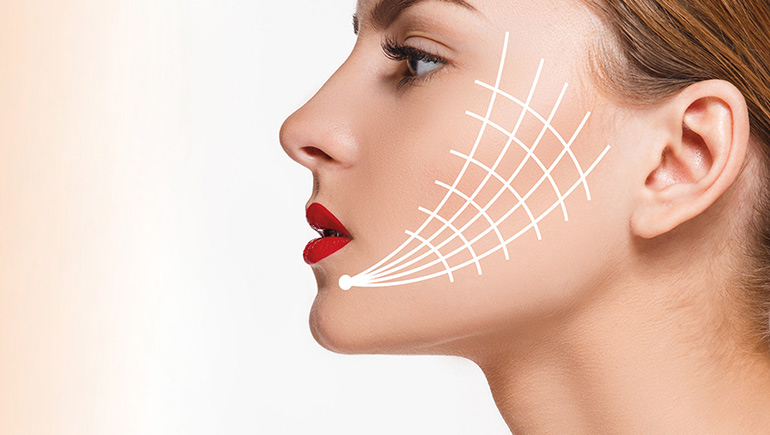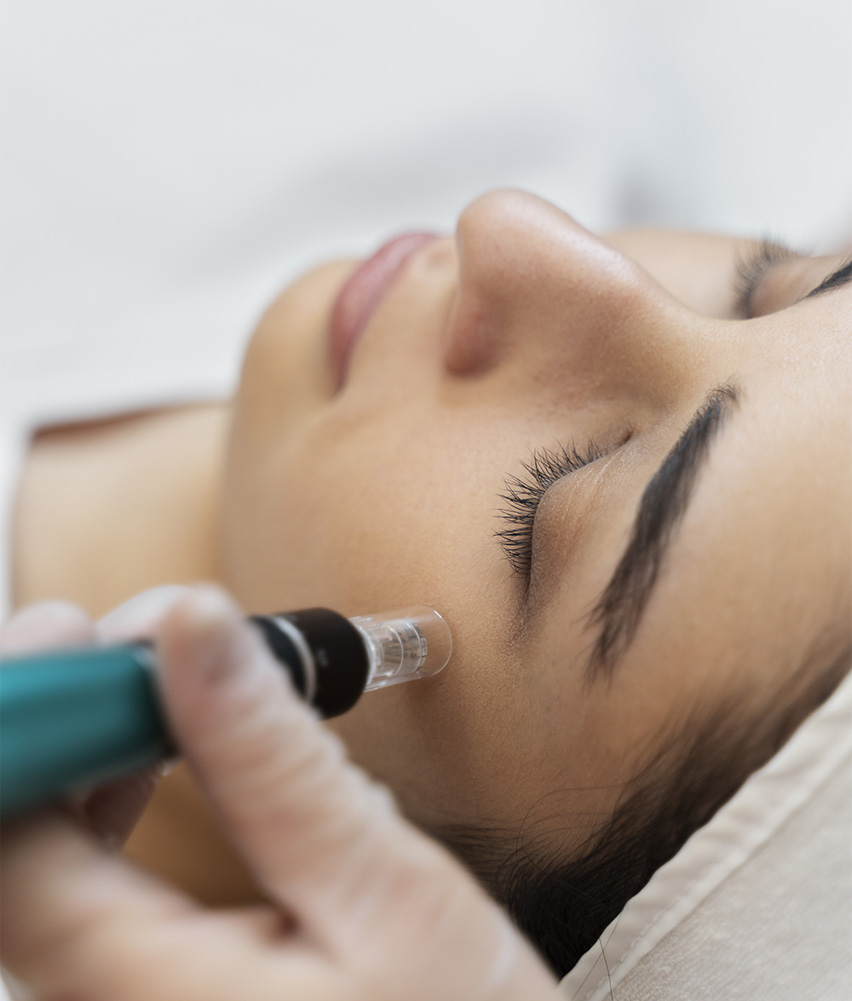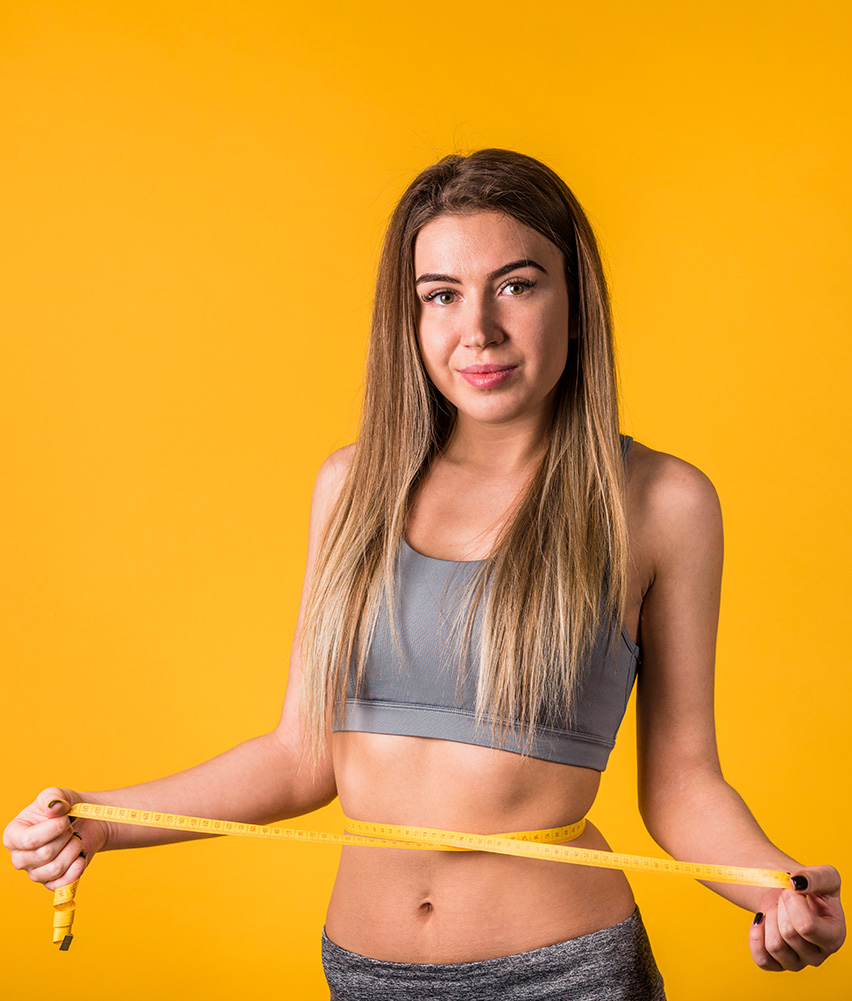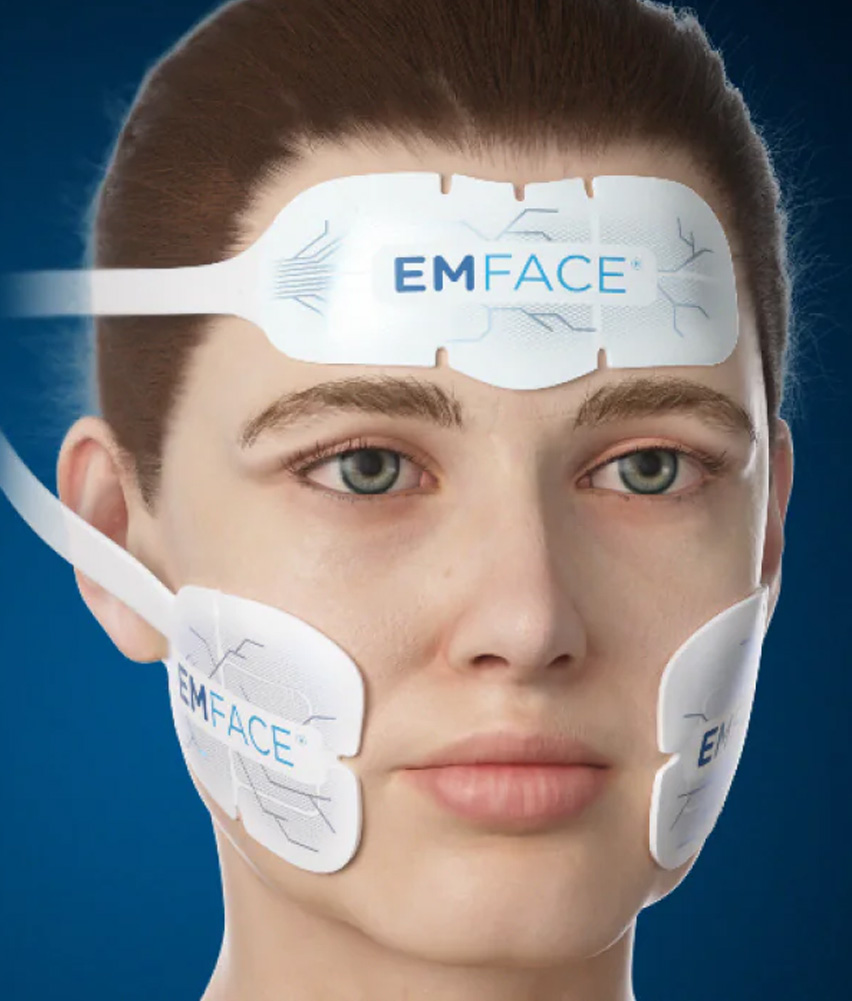
Thread Lift Treatment
We all want to look young forever. There would no one who hasn’t looked in the mirror, lifted up the skin on the face and wanted to fix it there and then. Thread lift procedure does exactly that.
As the ageing process and the sun damage, thin out our skin, and decrease the amount of collagen and elastic fibers, our skin begins to sag, deep creases, folds and wrinkles appear. These changes start becoming noticeable in early forties.
FAQ's
Q: What is it?
A: Thread lift is a minimally invasive, daycare procedure promoted world over as a ‘lunchtime facelift’ or a ‘weekend facelift’. It involves the use of implantable, specially designed surgical threads used to lift sagging skin on the mid-face, forehead, eyebrows, and neck. Although its popularity has waned over the years, it can be a great tool to address moderate drooping of the face and brow. The trick is to choose the client who is going to benefit the most and an expert in facial aesthetics should be able to assess and let you know whether the procedure is suitable for you.
Depending upon the kind of thread chosen for the thread lift procedure, you may find various names for it, for example, Aptos thread lift, Contour thread lift, Silhouette lift, Feather lift etc. It may be combined with other surgical procedures, such as blepharoplasty (lid lift procedures) chin lifts, neck lifts and brow lifts for a customized approach to facial rejuvenation. Most commonly, it is combined with non-surgical treatments like Anti-wrinkle injection, Injectable Fillers to get optimal results.
Q: What are the advantages?
A: The main advantages would be that this procedure can be performed under local anaesthesia with the patient getting a chance to give feedback during the procedure. The other advantages are that the patient gets a more youthful, rested look in a relatively short period of time, without much social downtime with minimal scarring, and that it is easier on the pocket as compared to a full facelift. Further, a previous thread lift surgery does not preclude a face lift surgery, when the need arises for that.
The aesthetic results though are less dramatic and last shorter than a face lift surgery, they would last longer than non-invasive techniques- far more than anti-ageing skin creams.
Q: Who is an ideal candidate ?
A: Ideal candidates for thread lifts include younger people (mostly between 35 and 55 years of age) with minimal signs of aging, with cheek and brow ptosis, who have relatively good skin tone without excessively loose skin and don’t need a surgical facelift just yet. One could begin to think of a thread lift if the small jowls at the jaw, lax (less taut) mid-facial appearance, nasolabial folds or slightly baggy eyes or subtle neck folds have started to bother you. Older people may undergo a thread lift during the more invasive facelift procedure to provide additional support for the soft tissue area that was elevated in the facelift.
Thread lifts are not a substitute in those cases where a full surgical face-lift is recommended. The results achieved are not as dramatic or long lasting as those following a facelift, however, the recovery time, discomfort and cost are much less. It would suffice to say that a face-lift can take you decades back on the age clock and a thread lift could take you, say 5-7 years back on the age clock.
Other thread lift candidates include those who already undergone a facelift or neck-lift a few years back and want to tackle signs of further ageing.
The third kind of candidates who could benefit from it would be those who actually need a surgical face-lift but are put off by traditional surgery or don’t want general anaesthetic.
One must however bear in mind that the results of a thread face-lift are less remarkable and less lasting than a full surgical face-lift, but more effective and long lasting than Anti-wrinkle injection and other fillers.
Q: Who is not a good candidate?
A: Patients with unrealistic expectations, those with uncontrolled medical illnesses, those with a lot of excess skin, esp. large jowls, those with a thin, fragile, ageing skin or those with negligible facial fat are considered to be poor candidates for this procedure. A large part of success depends on choosing the right patients for this procedure.
Q: Which areas can be treated?
A: A thread lift can be used to lift sagging cheeks/ mid-face, soften the appearance of jowls, and nasolabial folds. It can also be utilized to create a better balance for asymmetrical eyebrows and create a prettier arch. A surgeon who is an expert in facial aesthetics can personalize your surgery plan to suit your exact needs and suggest if any other procedure should be combined with it.
Q: How is it done?
A: The thread lifting procedure usually takes approximately 1 hour and is performed under local anaesthesia, sometimes coupled with conscious sedation. It is done as a day care procedure and no hospital admission is required.
Before the procedure, the marking the face of the patient is done according to the direction of elevation planned after assessing the client. This is a very important step and needs a skilled surgeon who is an expert in facial aesthetics.
After this, using a thick, hollow needle the special barbed thread is inserted into the facial skin usually through a very small an incision hidden in the hairline. It is advanced subcutaneously along the previously marked contours using a ‘tunneling technique’, and then pulled across the area being worked on. The barbs that are spaced evenly apart on the thread attach themselves to the fleshy areas of the face, and the thread pulls them tighter.
These threads/sutures are made from polypropylene which is a safe, strong, stable and non-absorbable material and therefore they do not dissolve over time. Thus the threads have excellent longevity but the anchoring barbs are, designed to be broken down by the body after a few years, by which time the collagen fibers keep them in place.
Normally, a minimum of four threads is needed to achieve optimal results.
Almost immediately, the treated areas would appear slightly raised, decreasing the sagging and thus giving a fresh, rejuvenated appearance. Since the clients usually remain fully conscious during the procedure, they can look into a hand held mirror and approve of the achieved pull while the surgeon is working on them. After that, the threads are knotted and are hidden within the skin itself, and therefore, no visible scarring is expected.
Q: How does it work?
A: The special threads used for thread lift have barbs resembling tiny fish hooks, that are evenly spaced along the thread. These act as cogs and open like an umbrella when the surgeon withdraws the needle and deposit themselves in the drooping tissues of the face. Then, the surgeon gently tugs on the thread, cuts them short and anchors one end in the deep tissues above the hairline which immediately elevates the loose skin to a more youthful position. This result is further enhanced over next two weeks as the body naturally generates new collagen bundles around each thread. This maintains the lifting effect for years to come and gives a relaxed, fresh appearance, while preserving the natural contours of the face.
Due to the unique design of these threads, the surrounding tissues act to hold the threads in place without the need for any visible scars.
Q: How long does it take and what is the recovery time?
A: The procedure usually takes about an hour to complete, depending on the number of threads used. Patients can home soon after the procedure. The social downtime is minimal as there are no stitches, no dressings, no visible scars and the patient usually can be back at work within two to three days.
Some swelling, redness, bruising, mild discomfort and tightness of the facial skin is expected after the procedure which usually subsides in a day or two. To reduce bruising and swelling, elevation of head and ice packs are recommended for the first 24-48 hours. Pain and discomfort is treated with pain-killers. To prevent post-procedural infection, prophylactic antibiotics are prescribed.
Full recovery generally takes a week.
In case of anchored threads, the patient might experience folds and dimples on the face for 2 to 3 weeks, which settles thereafter.
The patient would need an escort to be driven home and would need assistance with daily activities for a day after which non strenuous activities can be resumed. Soft diet is recommended for a week
Q: Dos and don’ts after thread facelift?
A: One must abstain from smoking starting a few weeks before the procedure and continuing few weeks after the procedure, as smoking interferes with wound healing and collagen formation.
We also advise not to minimize facial expression as much as possible to prevent the threads from getting dislodged or extruded. Excessive talking, laughing, chewing, rubbing of the face and sleeping in prone position should be avoided. This precaution must be followed for upto 3-4 weeks.
Direct exposure to sun must also be avoided for a several days.
Q: When are the results visible?
A: The results are immediately noticeable and get enhanced over next 3-4 weeks. They could last upto three to five years.
Q: What are the risks and side effects?
A: No surgical procedure is completely risk free, and minor side effects such as infection, bruising, swelling, tenderness, numbness and slight asymmetry and mostly depends on the expertise and experience of the surgeon. Moreover, simple bruising, tenderness and numbness usually subside within a few days. Infection, if occurs can mostly be treated with oral antibiotics. Puckering or dimpling of the skin may also occur after the procedure, but this too usually settles after a few weeks.
Rare complications include dislodgement or breakage of the sutures, which could cause some facial asymmetry. In both these cases, a simple reinsertion could solve the problem. The chances of this complication however are reduced further as time passes and collagen fibers have formed around the barbs.
The threads can be felt underneath the skin of the face and may occasionally even be visible. This usually happens if the surgical technique is poor or the patient’s skin is too thin and fragile. Patients with thin skins are usually not selected for this procedure.
If the client is not satisfied with the procedure, these threads could be removed. But once the threads fet encapsulated by collagen fibers, this removal becomes a little difficult. However, they can always be removed at the time of definitive face-lift surgery.
Q: Comparison with Full Surgical facelift?
A: One should keep in mind that thread lift is not indicated to replace a facelift, and client selection is completely different for both the procedures. However, if one must compare, the results aren't long lasting as the facelift, as the tissue eventually relaxes in 4-5 years. This procedure does not remove the excess skin as a facelift does but only tightens the skin.
A facelift is a more invasive, longer procedure, done under general anesthesia and requires hospital admission. The social downtime is longer and recovery takes more time with a facelift. Comparison with Full Surgical facelift



